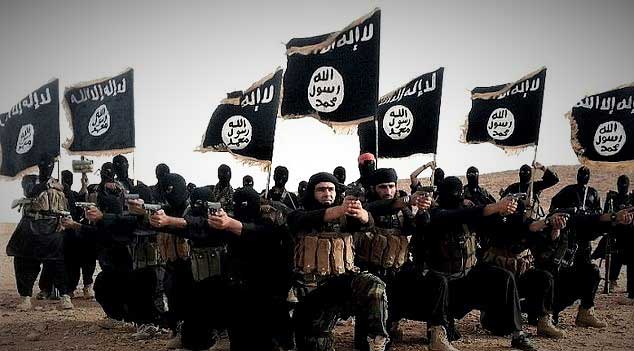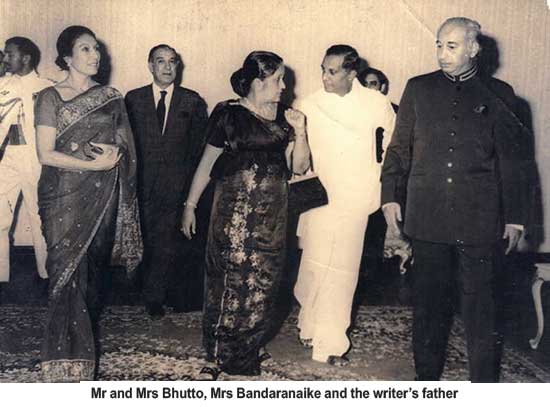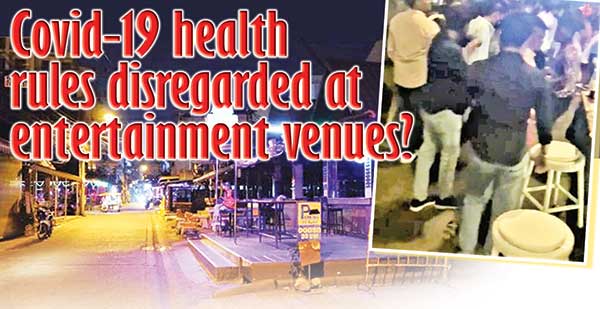Features
Restaging Z-Score Debacle

The release of the Z scores for university admission by University Grants Commission (UGC) has brought thousands of complaints and issues from the students, parents, teachers and other stakeholders into discussion. Some others have vowed to take the issue to courts, expecting a fair and just solution.
Most of the complaints are related to the issue of two different cutoff Z scores for new syllabus and old syllabus and comparisons thereof. It is understood that the solutions proposed to resolve a crisis must not only be fair and legal but also seen to be reasonable for the stakeholders. Print media during the last couple of weeks published several opinions on this issue and the use of Z score for university admission is often blamed as the reasons for these discrepancies. It is time we had a closer look at the problem and baseless allegations against the use of Z-score for university admission. The use of Z-score in place of aggregated marks of the three subjects is, by all means, a better method, which has been amply demonstrated with data and examples and subjected to discussion since its introduction for university admission in 2003.
 There is a diverse degree of variability in nature itself and so it is with the humans and their work. The scientific discipline called statistics provides the conceptual and procedural approaches to understand the variability and manage it fairly and equitably. Due to the inherent variability present in question papers and evaluations, it is very well understood that the simple aggregate obtained from the marks of different subjects is not a fair criterion for determining the eligibility for university admission. The degree of difficulty of the question papers in different subjects varies significantly and also there are variations of the aptitude measurement scale in different years. Therefore, it was not possible to have a fixed cut-off mark or simple aggregate solution to determine eligibility for university admission. For example, marks for one subject could have a range from 5 to 70 while the range for another subject spans from 45 to 99. A student who obtained 70 is the best among the lot in the first case and the one who obtained 70 in the second case is a mediocre student. When the simple aggregate is taken as the criterion for university admission, the best student in the first case is treated equally with the mediocre student who opted for a relatively easy subject as in the second case. Within the general assumption that students who sit for these two different subjects have a more or less equal level of competence, the disparity in the relative difficulty of the question papers or evaluation criteria warrants some sort of an approach for standardization. This issue was the theme for a series of discussions in academic circles and despite several advanced methodologies available for standardization, the Z score approach was adopted about 20 years back as the criterion for university admission due to its simplicity, computational convenience, application efficiency and the need for only two parametric estimates for its calculation.
There is a diverse degree of variability in nature itself and so it is with the humans and their work. The scientific discipline called statistics provides the conceptual and procedural approaches to understand the variability and manage it fairly and equitably. Due to the inherent variability present in question papers and evaluations, it is very well understood that the simple aggregate obtained from the marks of different subjects is not a fair criterion for determining the eligibility for university admission. The degree of difficulty of the question papers in different subjects varies significantly and also there are variations of the aptitude measurement scale in different years. Therefore, it was not possible to have a fixed cut-off mark or simple aggregate solution to determine eligibility for university admission. For example, marks for one subject could have a range from 5 to 70 while the range for another subject spans from 45 to 99. A student who obtained 70 is the best among the lot in the first case and the one who obtained 70 in the second case is a mediocre student. When the simple aggregate is taken as the criterion for university admission, the best student in the first case is treated equally with the mediocre student who opted for a relatively easy subject as in the second case. Within the general assumption that students who sit for these two different subjects have a more or less equal level of competence, the disparity in the relative difficulty of the question papers or evaluation criteria warrants some sort of an approach for standardization. This issue was the theme for a series of discussions in academic circles and despite several advanced methodologies available for standardization, the Z score approach was adopted about 20 years back as the criterion for university admission due to its simplicity, computational convenience, application efficiency and the need for only two parametric estimates for its calculation.
Today, the issue is somewhat different and it is not possible to assume that the students who sat for two different papers in the same subject are having a more or less equal level of competence or they are random picked from the larger population. The first group has sat for the examination for the first time and the other group has at least attempted to pass the examination on one or more previous occasions. This is evident from the number of the first, second and third attempt students in different disciplines. In exploring a solution to this present problem, the underlying assumptions made in calculating the Z score rankings need to be reexamined. One of the assumptions is that the aptitude of knowledge and skills of the student population opting for different subjects or subject streams are not significantly different. This assumption should be validated now because almost all the students who sat the examination under the old syllabus except those with valid medical or other reasons have made a failed attempt to enter university earlier.
Those who qualify from the new syllabus are a group of students who took the examination for the first time. The assumption of equal knowledge and similar competency level and skill background for these two diverse groups introduces an error into the fair selection process. It is not possible to issue a single series of Z-scores for these two groups. Before processing marks, the hypothesis of statistically non-significant difference between these two student groups needs to be validated with at least past data for a period of 5 years. Since this hypothesis cannot be proved, then the degree of dissimilarity needs to be assessed to determine a fair ratio for university admission from these two groups of students and design a quota for these two groups. This is what the UGC has attempted to employ in the selection process, however, higher differences in the cut-off Z scores due to the impact of quota applied for the two groups has led to serious doubts in the mind of those without an in-depth knowledge of the method.
The second issue is whether the relative difficulty of two questions papers in both old and new syllabi is significantly different. The expert opinion is the only choice we have in this decision. If experts believe that the two sets of questions papers are of more or less a same level of standard, then the two results could have been combined into a single data series with only one set of Z scores and cut-off marks. Unfortunately, there is no evidence to show that this option had been explored by the UGC. If the question papers are at significantly different standards, then it is not possible to combine the two results series. Then the question must be asked from the Department of Examinations why the standards were made to be different and a strong justification for such an action. We always advise our students that they should propose a valid statistical methodology before they collect their data for research to ensure the compatibility of data with the statistical techniques to be employed in the analysis. Unfortunately, the Department of Examinations could not stick to this advice and only seeks a statistically valid solution after collecting the data from student examinations.
Without understanding the pertinent facts, some argue that the mistakes made in 2011/12 university admission have been repeated in releasing the Z-scores for 2019/20 university admission. A similar problem indeed arose in 2011/12 admission due to the release of Z scores, combining the results of students who followed the GCE Advanced level under old and new syllabi. However, in 2011/12 university admission, the major issue was the errors made in the calculation of Z scores by the Department of Examinations. That mistake was further complicated due to the release of a single Z score combining the two distinctly different student populations of old and new syllabi as a single group by the UGC. A presidential expert committee was appointed to look into the problem and the mistake in the calculation was quickly identified and corrected. Besides, the need to consider the two student populations of old and new syllabi separately for university admission was proposed and it was later approved by a Supreme Court judgment in a case filed by a group of aggrieved students.
There are few solutions which could have been adopted to avoid the complexity of the problem and misunderstanding among the students, parents and teachers:
a) The easiest approach would have been the designing one question paper for both groups of students sitting the examination under both old and new syllabi giving options to select questions from the areas that had been revised or amended in the new curriculum. It is observed that there have been no major deviations and only minor changes have been made as regards Physics and Chemistry. The relative difficulty level needs to be maintained across all optional questions. Then, it is a single question paper and a single Z score series generated from the results. This should have been achieved at the point of setting of question papers by the examiners with clear instructions.
b) if the two questions papers, although structurally different, are of the same level of difficulty, the results of the two examinations could have been combined and Z scores computed as a single series.
This solution could have been explained to the Supreme Court and concurrence on this approach sought.
It could have been assumed that although the student populations were different, the same level of tests had been administered for both groups and therefore,
c) The most reasonable solution for the problem is to determine the ratios of students admitted to universities for each subject stream and each degree programme separately for old and new syllabus students, and then for each case use the five-year maximum proportion to admit students to universities. Then the total would exceed one hundred since the maximum of both ratios would exceed 100 and a small proportion of students needs to be admitted to each degree programme to avoid any obvious injustice. The use of median value can also be adopted unless there is a positive or negative trend in the ratios. If the five-year values are stationary and have a low variability among years, this becomes a fair solution. In case the five-year values are having a higher degree of variability and an obvious trend, the most recent value should have been the choice. This method of median value was adopted this year and due to the quota being significantly different for different disciplines and degree programmes, the cut-off Z scores have shown many differences for new and old syllabi students. Also, the cut-off Z-scores are significantly high compared to the figures of the previous years due to the application of quota which sometimes 25% of the original 100. This is the reason for the complaints although the method used for selection is in keeping with the ruling of the Supreme Court in 2012.
However, this problem could have been avoided if the two series of Z scores were adjusted as per the quota granted for each series. A simple mathematical computation could have brought the two distributions on a comparable model. The adjusted Z scores are comparable with the figures of the previous years and it would not produce cut-off Z scores which are much different for students in two groups. The confusion created due to the releasing Z scores indicating a different level of access to university entrance in the two different groups could have been avoided with the help of such an approach.
The writer is Former Vice-Chancellor of the Uva Wellassa University and Chairman of the UGC University Admission Committee in 2013/14 and member of Presidential Committee on Z score in 2012 .
- News Advertiesment
See Kapruka’s top selling online shopping categories such as Toys, Grocery, Flowers, Birthday Cakes, Fruits, Chocolates, Clothing and Electronics. Also see Kapruka’s unique online services such as Money Remittence,News, Courier/Delivery, Food Delivery and over 700 top brands. Also get products from Amazon & Ebay via Kapruka Gloabal Shop into Sri Lanka.
Features
Islamophobia and the threat to democratic development

There’s an ill more dangerous and pervasive than the Coronavirus that’s currently sweeping Sri Lanka. That is the fear to express one’s convictions. Across the public sector of the country in particular many persons holding high office are stringently regulating and controlling the voices of their consciences and this bodes ill for all and the country.
The corrupting impact of fear was discussed in this column a couple of weeks ago when dealing with the military coup in Myanmar. It stands to the enduring credit of ousted Myanmarese Head of Government Aung San Suu Kyi that she, perhaps for the first time in the history of modern political thought, singled out fear, and not power, as the principal cause of corruption within the individual; powerful or otherwise.
To be sure, power corrupts but the corrupting impact of fear is graver and more devastating. For instance, the fear in a person holding ministerial office or in a senior public sector official, that he would lose position and power as a result of speaking out his convictions and sincere beliefs on matters of the first importance, would lead to a country’s ills going unaddressed and uncorrected.
Besides, the individual concerned would be devaluing himself in the eyes of all irrevocably and revealing himself to be a person who would be willing to compromise his moral integrity for petty worldly gain or a ‘mess of pottage’. This happens all the while in Lankan public life. Some of those who have wielded and are wielding immense power in Sri Lanka leave very much to be desired from these standards.
It could be said that fear has prevented Sri Lanka from growing in every vital respect over the decades and has earned for itself the notoriety of being a directionless country.
 All these ills and more are contained in the current controversy in Sri Lanka over the disposal of the bodies of Covid victims, for example. The Sri Lankan polity has no choice but to abide by scientific advice on this question. Since authorities of the standing of even the WHO have declared that the burial of the bodies of those dying of Covid could not prove to be injurious to the wider public, the Sri Lankan health authorities could go ahead and sanction the burying of the bodies concerned. What’s preventing the local authorities from taking this course since they claim to be on the side of science? Who or what are they fearing? This is the issue that’s crying out to be probed and answered.
All these ills and more are contained in the current controversy in Sri Lanka over the disposal of the bodies of Covid victims, for example. The Sri Lankan polity has no choice but to abide by scientific advice on this question. Since authorities of the standing of even the WHO have declared that the burial of the bodies of those dying of Covid could not prove to be injurious to the wider public, the Sri Lankan health authorities could go ahead and sanction the burying of the bodies concerned. What’s preventing the local authorities from taking this course since they claim to be on the side of science? Who or what are they fearing? This is the issue that’s crying out to be probed and answered.
Considering the need for absolute truthfulness and honesty on the part of all relevant persons and quarters in matters such as these, the latter have no choice but to resign from their positions if they are prevented from following the dictates of their consciences. If they are firmly convinced that burials could bring no harm, they are obliged to take up the position that burials should be allowed.
If any ‘higher authority’ is preventing them from allowing burials, our ministers and officials are conscience-bound to renounce their positions in protest, rather than behave compromisingly and engage in ‘double think’ and ‘double talk’. By adopting the latter course they are helping none but keeping the country in a state of chronic uncertainty, which is a handy recipe for social instabiliy and division.
In the Sri Lankan context, the failure on the part of the quarters that matter to follow scientific advice on the burials question could result in the aggravation of Islamophobia, or hatred of the practitioners of Islam, in the country. Sri Lanka could do without this latter phobia and hatred on account of its implications for national stability and development. The 30 year war against separatist forces was all about the prevention by military means of ‘nation-breaking’. The disastrous results for Sri Lanka from this war are continuing to weigh it down and are part of the international offensive against Sri Lanka in the UNHCR.
However, Islamophobia is an almost world wide phenomenon. It was greatly strengthened during Donald Trump’s presidential tenure in the US. While in office Trump resorted to the divisive ruling strategy of quite a few populist authoritarian rulers of the South. Essentially, the manoeuvre is to divide and rule by pandering to the racial prejudices of majority communities.
It has happened continually in Sri Lanka. In the initial post-independence years and for several decades after, it was a case of some populist politicians of the South whipping-up anti-Tamil sentiments. Some Tamil politicians did likewise in respect of the majority community. No doubt, both such quarters have done Sri Lanka immeasurable harm. By failing to follow scientific advice on the burial question and by not doing what is right, Sri Lanka’s current authorities are opening themselves to the charge that they are pandering to religious extremists among the majority community.
The murderous, destructive course of action adopted by some extremist sections among Muslim communities world wide, including of course Sri Lanka, has not earned the condemnation it deserves from moderate Muslims who make-up the preponderant majority in the Muslim community. It is up to moderate opinion in the latter collectivity to come out more strongly and persuasively against religious extremists in their midst. It will prove to have a cementing and unifying impact among communities.
It is not sufficiently appreciated by governments in the global South in particular that by voicing for religious and racial unity and by working consistently towards it, they would be strengthening democratic development, which is an essential condition for a country’s growth in all senses.
A ‘divided house’ is doomed to fall; this is the lesson of history. ‘National security’ cannot be had without human security and peaceful living among communities is central to the latter. There cannot be any ‘double talk’ or ‘politically correct’ opinions on this question. Truth and falsehood are the only valid categories of thought and speech.
Those in authority everywhere claiming to be democratic need to adopt a scientific outlook on this issue as well. Studies conducted on plural societies in South Asia, for example, reveal that the promotion of friendly, cordial ties among communities invariably brings about healing among estranged groups and produces social peace. This is the truth that is waiting to be acted upon.
Features
Pakistan’s love of Sri Lanka

By Sanjeewa Jayaweera
It was on 3rd January 1972 that our family arrived in Karachi from Moscow. Our departure from Moscow had been delayed for a few weeks due to the military confrontation between Pakistan and India. It ended on 16th December 1971. After that, international flights were not permitted for some time.
The contrast between Moscow and Karachi was unbelievable. First and foremost, Moscow’s temperature was near minus 40 degrees centigrade, while in Karachi, it was sunny and a warm 28 degrees centigrade. However, what struck us most was the extreme warmth with which the airport authorities greeted our family. As my father was a diplomat, we were quickly ushered to the airport’s VIP Lounge. We were in transit on our way to Rawalpindi, the airport serving the capital of Islamabad.
We quickly realized that the word “we are from Sri Lanka” opened all doors just as saying “open sesame” gained entry to Aladdin’s cave! The broad smile, extreme courtesy, and genuine warmth we received from the Pakistani people were unbelievable.
This was all to do with Mrs Sirima Bandaranaike’s decision to allow Pakistani aircraft to land in Colombo to refuel on the way to Dhaka in East Pakistan during the military confrontation between Pakistan and India. It was a brave decision by Mrs Bandaranaike (Mrs B), and the successive governments and Sri Lanka people are still enjoying the fruits of it. Pakistan has been a steadfast and loyal supporter of our country. They have come to our assistance time and again in times of great need when many have turned their back on us. They have indeed been an “all-weather” friend of our country.
Getting back to 1972, I was an early beneficiary of Pakistani people’s love for Sri Lankans. I failed the entrance exam to gain entry to the only English medium school in Islamabad! However, when I met the Principal, along with my father, he said, “Sanjeewa, although you failed the entrance exam, I will this time make an exception as Sri Lankans are our dear friends.” After that, the joke around the family dinner table was that I owed my education in Pakistan to Mrs B!
At school, my brother and I were extended a warm welcome and always greeted “our good friends from Sri Lanka.” I felt when playing cricket for our college; our runs were cheered more loudly than of others.
One particular incident that I remember well was when the Embassy received a telex from the Foreign inistry. It requested that our High Commissioner seek an immediate meeting with the Prime Minister of Pakistan, Mr Zulifikar Ali Bhutto (ZB), and convey a message from Mrs B. The message requested that an urgent shipment of rice be dispatched to Sri Lanka as there would be an imminent rice shortage. As the Ambassador was not in the station, the responsibility devolved on my father.
It usually takes about a week or more to get an audience with the Prime Minister (PM) of a foreign country due to their busy schedule. However, given the urgency, my father spoke to the Foreign Ministry’s Permanent Sectary, who fortunately was our neighbour and sought an urgent appointment. My father received a call from the PM’s secretary around 10 P.M asking him to come over to the PM’s residence. My father met ZB around midnight. ZB was about to retire to bed and, as such, was in his pyjamas and gown enjoying a cigar! He had greeted my father and had asked, “Mr Jayaweera, what can we do for great friend Madam Bandaranaike?. My father conveyed the message from Colombo and quietly mentioned that there would be riots in the country if there is no rice!
ZB had immediately got the Food Commissioner of Pakistan on the line and said, “I want a shipload of rice to be in Colombo within the next 72 hours!” The Food Commissioner reverted within a few minutes, saying that nothing was available and the last export shipment had left the port only a few hours ago to another country. ZB had instructed to turn the ship around and send it to Colombo. This despite protests from the Food Commissioner about terms and conditions of the Letter of Credit prohibiting non-delivery. Sri Lanka got its delivery of rice!
The next was the visit of Mrs B to Pakistan. On arrival in Rawalpindi airport, she was given a hero’s welcome, which Pakistan had previously only offered to President Gaddafi of Libya, who financially backed Pakistan with his oil money. That day, I missed school and accompanied my parents to the airport. On our way, we witnessed thousands of people had gathered by the roadside to welcome Mrs B.
When we walked to the airport’s tarmac, thousands of people were standing in temporary stands waving Sri Lanka and Pakistan flags and chanting “Sri Lanka Pakistan Zindabad.” The noise emanating from the crowd was as loud and passionate as the cheering that the Pakistani cricket team received during a test match. It was electric!
I believe she was only the second head of state given the privilege of addressing both assemblies of Parliament. The other being Gaddafi. There was genuine affection from Mrs B amongst the people of Pakistan.
I always remember the indefatigable efforts of Mr Abdul Haffez Kardar, a cabinet minister and the President of the Pakistan Cricket Board. From around 1973 onwards, he passionately championed Sri Lanka’s cause to be admitted as a full member of the International Cricket Council (ICC) and granted test status. Every year, he would propose at the ICC’s annual meeting, but England and Australia’s veto kept us out until 1981.
I always felt that our Cricket Board made a mistake by not inviting Pakistan to play our inaugural test match. We should have appreciated Mr Kardar and Pakistan’s efforts. In 1974 the Pakistan board invited our team for a tour involving three test matches and a few first-class games. Most of those who played in our first test match was part of that tour, and no doubt gained significant exposure playing against a highly talented Pakistani team.
Several Pakistani greats were part of the Pakistan and India team that played a match soon after the Central Bank bomb in Colombo to prove that it was safe to play cricket in Colombo. It was a magnificent gesture by both Pakistan and India. Our greatest cricket triumph was in Pakistan when we won the World Cup in 1996. I am sure the players and those who watched the match on TV will remember the passionate support our team received that night from the Pakistani crowd. It was like playing at home!
I also recall reading about how the Pakistani government air freighted several Multi Barrell artillery guns and ammunition to Sri Lanka when the A rmy camp in Jaffna was under severe threat from the LTTE. This was even more important than the shipload of rice that ZB sent. This was crucial as most other countries refused to sell arms to our country during the war.
Time and again, Pakistan has steadfastly supported our country’s cause at the UNHCR. No doubt this year, too, their diplomats will work tirelessly to assist our country.
We extend a warm welcome to Mr Imran Khan, the Prime Minister of Pakistan. He is a truly inspirational individual who was undoubtedly an excellent cricketer. Since retirement from cricket, he has decided to get involved in politics, and after several years of patiently building up his support base, he won the last parliamentary elections. I hope that just as much as he galvanized Sri Lankan cricketers, his political journey would act as a catalyst for people like Kumar Sangakkara and Mahela Jayawardene to get involved in politics. Cricket has been called a “gentleman’s game.” Whilst politics is far from it!.
Features
Covid-19 health rules disregarded at entertainment venues?

Believe me, seeing certain videos, on social media, depicting action, on the dance floor, at some of these entertainment venues, got me wondering whether this Coronavirus pandemic is REAL!
To those having a good time, at these particular venues, and, I guess, the management, as well, what the world is experiencing now doesn’t seem to be their concerned.
Obviously, such irresponsible behaviour could create more problems for those who are battling to halt the spread of Covid-19, and the new viriant of Covid, in our part of the world.
The videos, on display, on social media, show certain venues, packed to capacity – with hardly anyone wearing a mask, and social distancing…only a dream..
How can one think of social distancing while gyrating, on a dance floor, that is over crowded!
If this trend continues, it wouldn’t be a surprise if Coronavirus makes its presence felt…at such venues.
And, then, what happens to the entertainment scene, and those involved in this field, especially the musicians? No work, whatsoever!
Lots of countries have closed nightclubs, and venues, where people gather, in order to curtail the spread of this deadly virus that has already claimed the lives of thousands.
Thailand did it and the country is still having lots of restrictions, where entertainment is concerned, and that is probably the reason why Thailand has been able to control the spread of the Coronavirus.
With a population of over 69 million, they have had (so far), a little over 25,000 cases, and 83 deaths, while we, with a population of around 21 million, have over 80,000 cases, and more than 450 deaths.
I’m not saying we should do away with entertainment – totally – but we need to follow a format, connected with the ‘new normal,’ where masks and social distancing are mandatory requirements at these venues. And, dancing, I believe, should be banned, at least temporarily, as one can’t maintain the required social distance, while on the dance floor, especially after drinks.
Police spokesman DIG Ajith Rohana keeps emphasising, on TV, radio, and in the newspapers, the need to adhere to the health regulations, now in force, and that those who fail to do so would be penalised.
He has also stated that plainclothes officers would move around to apprehend such offenders.
Perhaps, he should instruct his officers to pay surprise visits to some of these entertainment venues.
He would certainly have more than a bus load of offenders to be whisked off for PCR/Rapid Antigen tests!
I need to quote what Dr. H.T. Wickremasinghe said in his article, published in The Island of Tuesday, February 16th, 2021:
“…let me conclude, while emphasising the need to continue our general public health measures, such as wearing masks, social distancing, and avoiding crowded gatherings, to reduce the risk of contact with an infected person.
“There is no science to beat common sense.”
But…do some of our folks have this thing called COMMON SENSE!










